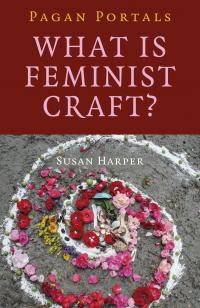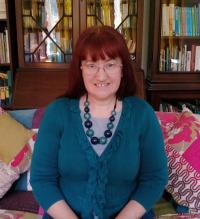
I spent most of Wednesday evening, this week, catching up on television that I'd missed over the preceding weekend. Now I don't wish to bore people with my taste in viewing, but I'm mentioning this because there's one particular programme I want to write about.
Leonora Carrington: The Lost Surrealist is an hour-long documentary exploring the life and work of the eponymous painter and writer*, whose work I first came across when I long ago picked up a collection of her short stories, The Seventh Horse & Other Tales, published by the feminist Virago Press during the 1980s as a "modern classic". I'm not quite sure who is meant to have "lost" Leonora. Certainly not the Surrealists, among whom she was a major force for sixty years, participating in the movement's collective activities, as since her death (in 2011) she remains a much-respected figure within the movement. A clue may lie in the way that the documentary repeated the slander that Surrealism was (never is, because according to the academic art historians the movement is no longer allowed to exist) somehow fundamentally misogynistic. Some years ago, as a rejoinder to that very slander, Penelope Rosemont, a founding member of the Surrealist group in Chicago, edited and published an anthology of work by no less than one hundred Surrealist women, Leonora Carrington among them. Titled, rather helpfully, Surrealist Women, it even briefly appeared in the documentary, resting on one of Leonora's bookshelves, but perhaps the film makers simply forgot to pick it up and open the covers.
These are not unusual criticisms for a Surrealist to make of a documentary about Surrealism, sadly. But having put those out of the way, it wasn't all bad, if only because it did give long-overdue attention to Leonora's paintings.
More to the point, readers may be wondering why I'm choosing to write about Leonora Carrington, a Surrealist artist, in a blog related to Paganism and witchcraft. The answer is that - even leaving aside the close connections between Surrealism and the esoteric paths - Leonora was explicitly a worker with magic, and her paintings and her writings were the forms in which she expressed the discoveries she brought back from Inner worlds. As her fellow-Surrealist Octavio Paz described her, Leonora (along with her close friend Remedios Varo) was a "bewitched witch".

Steeped in her knowledge of occultism, of magic and mythology, with the capacity of a Celtic seeress for peering through the veils between worlds, a Surrealist visionary with great skill as a painter and writer, Leonora Carrington was never lost, but she does deserve to be found again by modern Paganism.
Not that her work merely restates or illustrates familiar stories. Her paintings, especially, can transport us to the landscapes of new myths and lead us to the beginnings of new journeys. They are not all easy. Paintings like Down Below, derived from her time imprisoned in a Spanish asylum with its attendant terrors, are certainly not for the faint-hearted. Yet these are images brought back from genuine explorations of the Inner world; and Leonora's work, even at its darkest, is always filled with mystery and wonder.
One little televisual trick they performed in the documentary has left me with an interesting thought.
The trick itself (a simple one, technologically) was to briefly turn some of Leonora's paintings into three-dimensional landscapes through which the camera could carry us. What I was reminded of was an old esoteric technique most often associated with the Tarot cards, whereby it's possible to visualise the imagery depicted on a card as a living scene, and then in the mind's eye step into that scene through the card as through a doorway. The technique is probably known to many, if not most, readers here.
In the same way, it would be possible to step into one of Leonora Carrington's paintings and experience those Inner landscapes for oneself; to interact with the mysterious beings she depicted there, as living entities. I can't help but wonder if this is what Leonora herself intended, or at least would approve, having written that, "The true duty of the artist is to know what he is doing and to transmit his knowledge with precision".
For, once again in Leonora's own words, "It is only in the strange magic ocean that we can find salvation for ourselves and our sick planet".
*Readers in the UK who would like to watch Leonora Carrington: The Lost Surrealist for themselves can find it on the BBC iPlayer at https://www.bbc.co.uk/iplayer/episode/b09j0lp9/leonora-carrington-the-lost-surrealist until 9th January 2018.
Categories:
0 comments on this article






